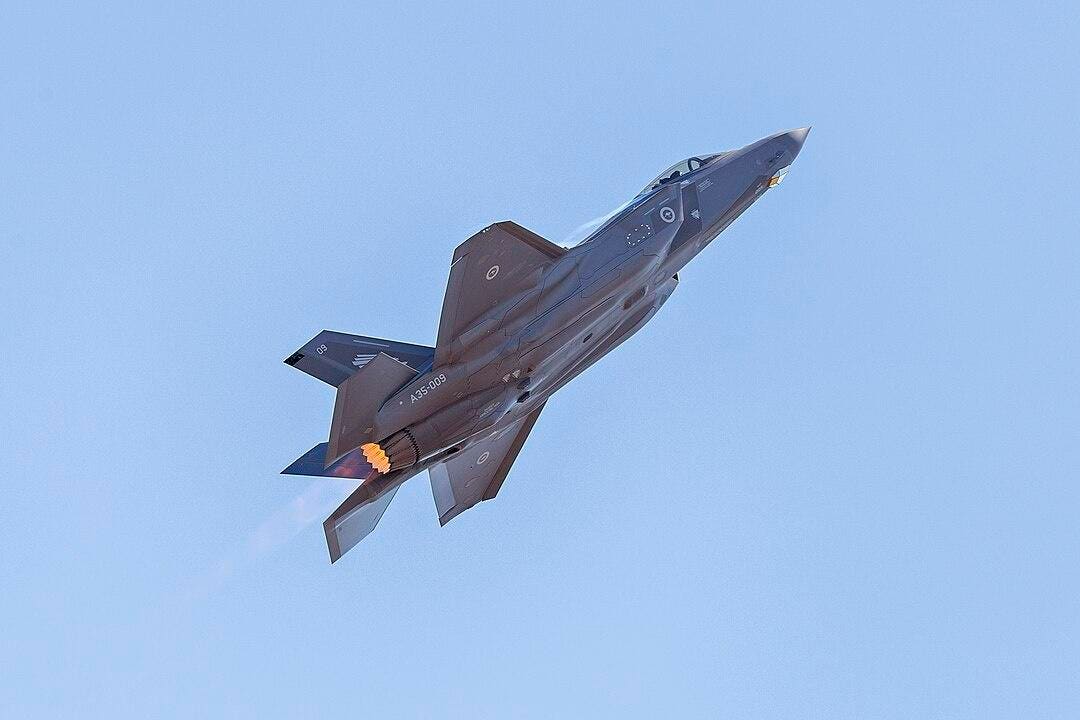The United States is the biggest source of global military sales, and its share of the market is growing. The Stockholm International Peace Research Institute reported earlier this year that the U.S. generated 40% of all arms exports during the period 2018-2022, compared with 33% during 2013-2017.
During the same span of time, SIPRI says that Russia’s arms exports shrank 31% and China’s fell 23%. The other big gainers besides America were France (up 44%), Italy (up 45%), and South Korea (up 74%).
Comparing the five-year period ending in 2022 with the earlier period, SIPRI calculates U.S. arms exports increased 14%, but the scale of U.S. sales dwarfs that of other countries. France, the third biggest exporter of arms after America and Russia, even with its recent gains, only claims 11% of the global market.
U.S. dominance of the arms trade is no surprise: its 40% market share corresponds with America’s 39% share of all global military spending. China, often described as the pacing threat in Pentagon strategic pronouncements, only represents 13% of world military expenditures.
Arms trafficking, though, is a business where the devil is in the details. Market developments are complicated. Nonetheless, the Biden administration has drawn three lessons from recent trends.
First, the aggressive behavior of Russia and China in their respective regions has increased the appetite of their neighbors for American weapons. Ukraine became the world’s third largest recipient of weapons imports last year, while demand for U.S. military equipment in Australia and Japan is way up.
Second, there is an opportunity to lock in Washington’s leadership of the arms trade at the expense of Russia, which traditionally has rivaled America for market dominance. U.S. policymakers hope to permanently relegate Russia to second-tier status in the arms trade.
Third, the rise in arms exports by allies points to problems in the execution of U.S. arms transactions, most notably in delivery delays to countries that have an urgent need for weapons such as Taiwan. When such delays occur, it is natural for prospective customers to turn to alternative sources such as France and South Korea.
Such delays undermine America’s reputation for reliability and potentially cost the U.S. jobs at a time when the defense industry has become an integral part of Washington’s emerging industrial policy.
The United States originates $100-200 billion in arms sales each year, so the economic fallout—good or bad—is significant. Unlike in other sectors of the economy, the government is the principal source of demand for defense-industry products, so Washington needs to take the lead in assuring the sector does not lose business due to federal inefficiency.
U.S. arms sales come in two flavors: direct commercial sales between foreign buyers and American companies, and government-to-government sales through a security assistance program called Foreign Military Sales.
Direct commercial sales typically represent the lion’s share of arms transactions, but FMS by itself averages $45 billion annually, which is bigger than the entire revenues of some industries.
Regardless of how transactions are conducted, all major weapons exports are subject to review by the State Department and must be submitted to Congress. Congress does not need to approve the sales, but if it moves to block a transaction, then the sale cannot occur.
The State Department’s Bureau of Political-Military Affairs is charged with determining whether a proposed transaction is compatible with national-security strategy, technology-export rules, and other requirements. In the case of FMS, once a sale is approved, it is then turned over to the Defense Department for implementation.
The Political-Military Bureau approves 95% of proposed transactions within a few days. The remaining 5%, though, can be problematic, and even after State signs off there are complexities that need to be resolved.
For instance, the Pentagon’s understaffed contracting office may take a long time to finalize agreements. Recipient countries may want to participate in the manufacture of weapons, which requires qualifying local sources. U.S. production capacity for the weapons may be backed up. And in the case of FMS, where U.S. funds are being used for purchases, Congress may fail to appropriate money for authorized transactions.
So, it is not hard to see how even arms sales that are urgent and in the national interest might take years to begin delivering the finished product. This has created an opening for overseas competitors of U.S. companies, such as South Korea’s Hanwha.
The State Department and Defense Department last year launched parallel examinations of how the time required to execute Foreign Military Sales transactions might be compressed. Among the initiatives now being implemented are to provide better training for the personnel on the ground who deal with prospective foreign customers, and instituting a clearer approach to prioritizing urgent requests.
The Defense Department is attempting to create an environment for continuous process improvement in implementing FMS projects, and is considering the incorporation of allied requirements into its demand signals to industry.
The latter effort is part of a broader response to the challenge created by the surge in demand for U.S. weapons. Domestic industry is capable of producing all of the systems sought, but it may not have the capacity to do so quickly. The Pentagon’s acquisition chief is considering the use of foreign sources that might serve as a backup for U.S. production sources.
It will take time to put into practice all of the improvements proposed, but one thing is abundantly obvious: the days when many Democrats were reflexively opposed to selling arms abroad are long gone. If overseas allies and partners are seeking weapons, the Biden administration wants those jobs for American workers, rather than workers in places like China.
Several companies engaged in the global arms trade contribute to my think tank.
Read the full article here





